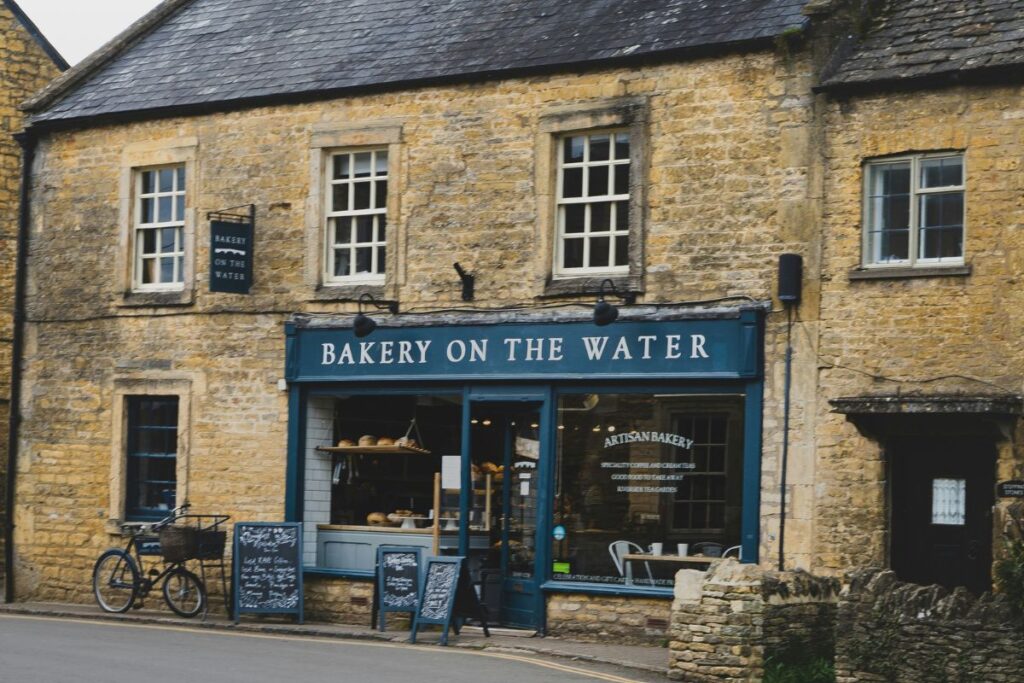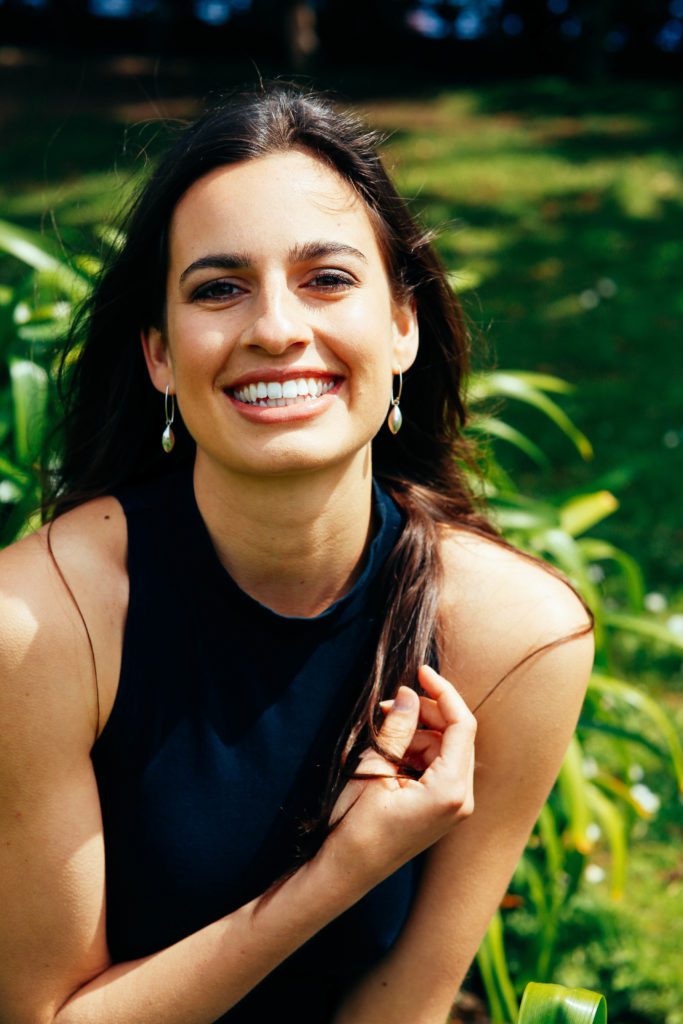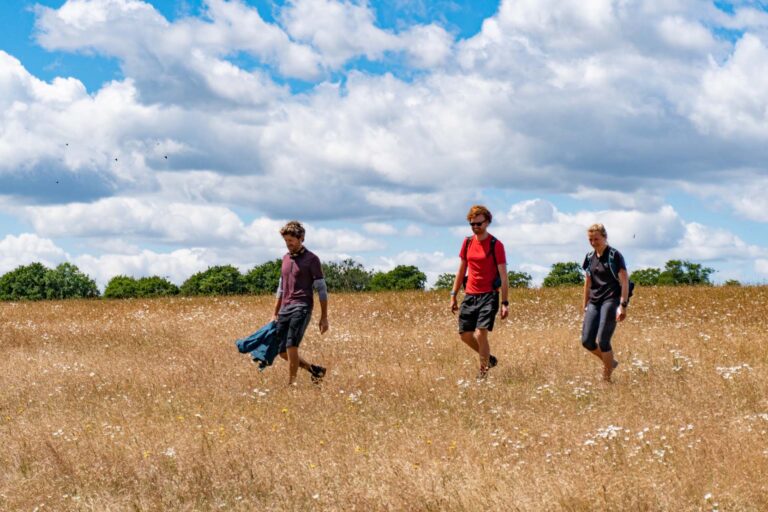August 24, 2023
Destination: Cotswolds
Share
In this article
A Guide to Walking the Cotswolds Stretch of the Fosse Way
Sometimes to appreciate something you simply have to look at what’s under your nose. And that’s certainly the case with the greatest legacy of +350 years of Roman occupation in Britain: the humble road.
Built to shuttle troops and supplies, and connect towns and forts, the Romans’ iconic, straight roads paved the way for civic life – and throughout Europe, we still use some of them today.
The Fosse Way is the longest Roman road in Britain, built in the middle of the 1st century AD. The name ‘Fosse’ derives from the Latin ‘fossa’, meaning ‘ditch’; it’s believed this is because the road followed a defensive ditch, which ran along the western border of Roman-controlled England.
Where is the Fosse Way?
The Fosse Way is 229 miles long, connecting Exeter in the southwest to Lincoln in the northeast. The route is steeped in history, passing through Shakespeare country and Bath, where Jane Austen made her home from 1801-1806.
After the Romans left England, the roads turned to dirt tracks. Some were turned into main roads, like the A34 from Bath to Ilchester, and the A30/A303 from Ilchester to Exeter; others were mostly turned into turnpike roads, which have become popular walking routes.
Can you walk the Fosse Way?
To walk the entire Fosse Way wouldn’t be the prettiest route (or the safest), as it largely follows busy main roads. If you’re cycling or in a car, it’s much easier as you can stop off in the quaint towns, and at landmarks and museums, walking sections as you go.
We recommend starting in the Cotswolds and then making your way to Tetbury, and onto Bath via Bathampton.

Walking the Fosse Way in the Cotswolds
The Cotswolds has one of the densest concentrations of Roman villas in England. For centuries this rich heritage lay hidden, until the Victorians discovered the remains of one of the largest Romano-British villas, over 150 years ago.
There are many National Trust sites in the Cotswolds, where the remains have been preserved, such as Chedworth Roman Villa (Nationaltrust.org.uk, Yanworth, near Cheltenham, Gloucestershire, GL54 3LJ), near Cheltenham, which provides a unique insight into life during the Roman period.
The pretty Cotswolds village of Bourton-on-the-Water is in the heart of the Fosse. The River Windrush meanders through the centre of the village, crisscrossed with several low stone bridges – as a result, some people call it the ‘Venice of the Cotswolds’. While you can’t do any A to B walking routes, as it’s a busy road, it’s a beautiful village to explore, with lots of routes surrounding it.

The Fosse Way: Tetbury to Bath Hiking Route (25 miles)
Starting in Tetbury and finishing in Bath, this route follows the Fosse Way 90% of the time – avoiding the major roads.
It’s 25 miles long, so you could do it in one day if you wanted to. Otherwise, you can split it up by taking a slight detour and staying in one of the villages neighbouring the Fosse Way, such as Foxley, Nettleton, Littleton Drew, Castle Combe, or North Wraxall. The trail is mostly very flat, so it’s manageable for anyone with a half-decent level of fitness.

From Tetbury, take Monarch’s Way across the fields until you reach the Fosse Way, which you can meet just next to Long Newton, or slightly further above.
Once you reach the Fosse Way, it’s a pretty straight road all the way to Bath, following the old Roman road.
To avoid some of the major roads near Bath, take a detour via Bathampton, which goes through the woods, up over the hill (204m), and into Bath.
As you near Bath, the Fosse Way turns into Bannerdown Road (the old Roman road). Follow this into Batheaston, and then cross over the River Avon, using the small bridge, and follow the road via Mill Lane and into Bathampton.
Hike up to the top of Bathampton Down – watching out for golf balls – and look out for the Iron Age Hillfort. Then make your way leisurely into Bath, crossing the river over Pulteney Bridge.
Bath was a very important settlement for the Romans, due to it being the site of the hot water spa and the port at Sea Mills, on the River Avon, which was a key trading port.
Planning a walking holiday in England, but looking for a more structured approach to your trip? Check out our selection of Cotswolds walking tours.







2 thoughts on “A Guide to Walking the Cotswolds Stretch of the Fosse Way”
I walked the Fosse from the Channel through Axminster, Ilchester, Bath, Stow, a side trip to Coventry, and on to Lincoln in the summer of 1985. A wonderful trip!
Amazing! Great to hear. Sophie, Active England